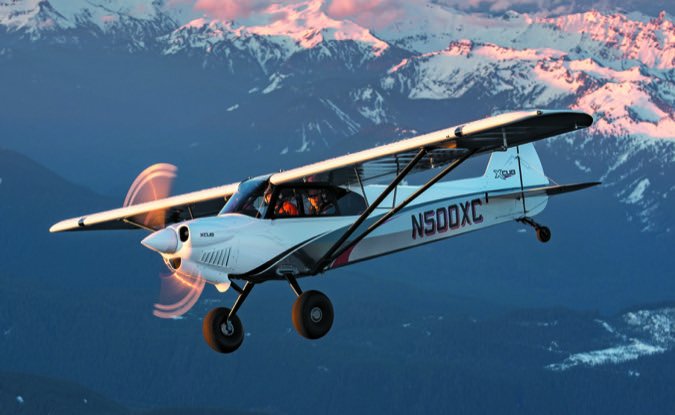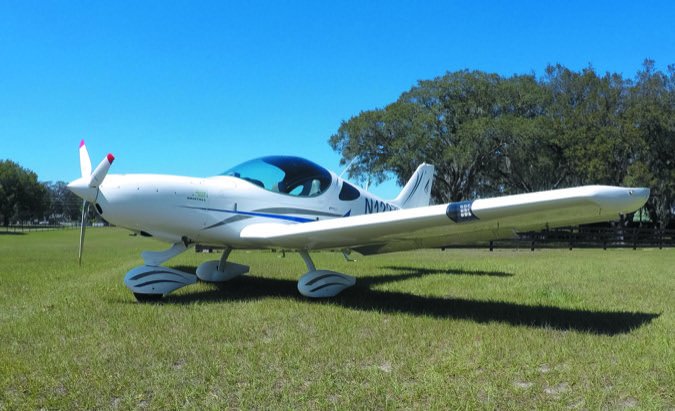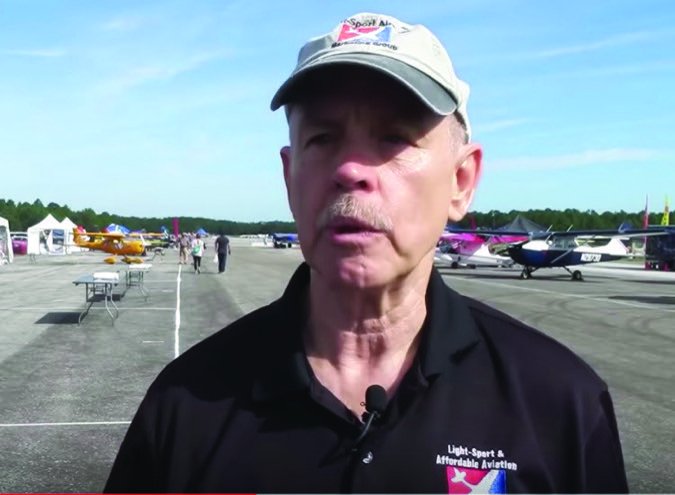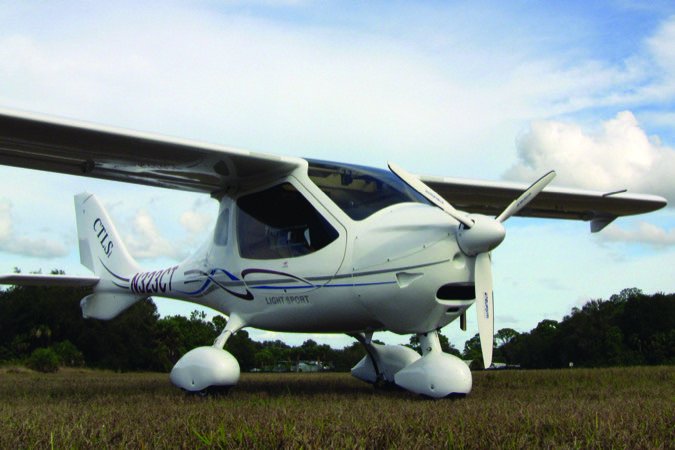A headline you’ve never read: Light Sport Aircraft Sales Explode in Fourth Quarter. One you might eventually read: FAA Approves Higher LSA Weight Limit. The latter is the fervent hope of some in the GA industry and as of late 2018, it’s about to be officially on the table.
And while it may seem like a no-brainer-what’s not to like about higher weight limits?-there’s also a certain wariness in the light sport manufacturing segment because any new regulation or change in an existing one is like turning over a rock. You never know what’s going to scurry out and proposed changes sans detail cause something manufacturers hate: uncertainty and market overhang.
Interviews with a half dozen people in the industry reveal a cautious optimism, but also reticence to offer definite opinions until the proposal is fleshed out. We may be a couple of years away from that, at the earliest. Don’t mark your calendar yet.
Cat Scurries Out
While discussion of a higher weight limit for light sport aircraft has been broached before, it gained some cred last fall at an AOPA Regional Fly-in in Carbondale, Illinois. In an informal talk, EAA’s Jack Pelton announced that the FAA would roll out an NPRM potentially raising the light sport limit to a whopping 3600 pounds in early 2019.
The reaction was swift and not all positive. Later in the same week, EAA walked back the comment to clarify that Pelton should have said the FAA had agreed to consider an NPRM and actually the rule was at least two to three years away. The announcement of the process would occur in 2019. Details to follow. People who sell airplanes understand buyers are both fickle and fragile and the slightest whiff of uncertainty can tank a deal.
“Jack Pelton, God love him, he’s a great guy and great for the industry, but he went out and said just one thing” one sales executive told me. Customers heard or read the news and were soon asking if it wouldn’t make more sense to wait awhile and see what shakes out. Other companies we spoke to reported variations on the same story.
The details of a potential NPRM remain sketchy simply because there are no details. The origin of the proposal appears to date to several years ago when a trial balloon of uncertain origin popped up in not-for-attribution reporting. The idea then was that the FAA was contemplating applying the same ASTM consensus standards used for light sport aircraft to certified aircraft up to 3600 pounds.

Although light sport manufacturers generally follow the guidelines described in FAR 23 in designing and building airplanes, ASTM consensus airplanes are not specifically “certified” airplanes. They’re airplanes approved to an agreed-upon standard by the individual manufacturers. The FAA exercises essentially no oversight of the process, testing is streamlined and the industry is expected to police itself. That the previous proposal never went anywhere was thus of little surprise.
What’s New?
Yet the 3600-pound limit lives on in the current discussion and Pelton mentioned it last fall. But EAA’s Sean Elliott, the association’s VP for advocacy and safety, cautions against obsessing on the number. Even if it has been mentioned, he said, the FAA is not far enough along to use it as anything other than a talking point.
Two other talking points include applying a formula of some kind to set new weight limits and/or a performance-based proposal rather than a specific weight limit. The entire discussion, Elliott says, is part of a larger regulatory reform package called MOSAIC, for Modernization of Special Airworthiness Certificates, that’s been underway for about two years. Some of that work is aimed at experimental aircraft and much of it is being driven by an overwhelming need for unmanned aircraft regulations.
“It’s a lot of the same work so it made sense to look at experimentals at the same time. The stars have sort of aligned,” Elliott explains. Elliott and others have told us the FAA seems genuinely cooperative and eager to produce reformed rules, even though it will take at least two years. The icebreaker was EAA’s initiative with Dynon Avionics to develop STCs to install non-certified, non-TSO’d avionics in certified aircraft.
“We’re obviously a few years away from the NPRM, but it’s moving forward. We’ve had good success with the dialog with the FAA. I’ve been pleasantly surprised and happy about how close our thinking is,” Elliott added.
Lately, there’s been more discussion about a performance-based rather than a weight-based formula for new and more capable light sport aircraft. Such limitations would probably include a maximum cruise speed-150 knots has been mentioned-maximum seats and limitations on configuration, such as fixed gear or controllable pitch props.
“The 3600 pounds is a notional point that we’ve gone in with. It seemingly makes sense on the continuum. What comes out the other side as far as weight is yet to be seen. There’s a lot of work yet to be done. Everything is on the table,” Elliott says.
Industry Reaction

And for the short term, everything on the table makes manufacturers nervous. Building and selling airplanes is fraught enough without introducing new variables whose influence and applicability are unknown. And some manufacturers have felt the effects immediately.
Tecnam has been having a banner year, but the company’s Shannon Yeager says the news of potentially higher LSA weights chilled things.
“Spreading this kind of thing ahead of actually having something concrete does nothing but hurt the market,” Yeager said. He explained that several buyers ready to push the button on a new airplane pushed pause instead. “They’re asking, ‘Why would I consider this when they’re going to change the weight? Is this retrofittable?’ How can I answer that? I can’t,” Yeager said.
Other airplane builders echo the same worry, even if they see a potential upside. “I guess it’s certainly not going to hurt anything,” says Kitfox’s John McBean. “But my concern is why are they doing this and to what end?” Kitfox is primarily a kit manufacturer, but it sells some SLSA airplanes, too. And like others of its ilk, the airplane is engineered for and has been demonstrated at a higher weight, specifically 1550 pounds, 230 pounds heavier than the standard 1320-pound landplane LSA limit. The open secret in light sport flying is that the 1320-pound limit is often ignored. McBean says the advantage of a higher gross weight would at least make such operations legal.
CubCrafters’ John Whitish is similarly inquisitive about applying a new limit to legacy airplanes, both CubCrafters’ own previous models and the limited number of older taildraggers grandfathered into the light sport rule. He sees an opportunity, too.
The company’s new X-Cub has proven to be a strong seller and might be more so if it could be sold to buyers who could fly it without need for a medical, including Basic Med. But, cautions Whitish, it might have no impact at all. CubCrafters noted a downturn in sales when Basic Med kicked in, with some buyers already migrating to either heavier kits or the X-Cub. Downside to the higher weights? “No. Our attitude has always been that if it’s good for the industry, it’s good for us,” Whitish adds.

“Clearly, these airplanes could use some more weight profitably,” says Dan Johnson, head of the Light Aircraft Manufacturers Association. Although Johnson doesn’t agree with the accepted wisdom that light sports are too flimsy to survive the rigors of daily flight training, he concedes that adding structure to them could be a net positive. “And as the light sport community has developed, people want more and more stuff on the airplane, autopilots are one idea, but people are saying, could I have this, could I have that,” Johnson adds. Bumping up the gross weight makes it practical and safe to add such accessories.
When light sport was first conceived, part of its intent was to ignite development of new models and new entrants and it has certainly done that. A higher weight limit could stimulate another round of development, especially with regard to new powerplants. McBean says he’s finding good uptake for Rotax’s new 915 iS. But because it’s heavier than the 912 and has a constant speed prop, it can only be used in experimental amateur-built aircraft. A change in rules could fix that.
“I believe it will help Bristell. We have other airplanes in the works. We’ve been working on a four-place airplane, testing that at 1600 pounds,” says Lou Mancuso of Bristell Aircraft. EAA’s Elliott says the association is confident that a new rule will allow more seats, although no promises can be made.
Manufacturers who build sleek composite models will be looking at a new rule with an idea toward top speed. Currently, many of those models-most of which come out of Eastern Europe-are already capable of exceeding the 120-knot maximum level flight cruise speed specified for U.S. light sports, while still hitting the 45-knot stall speed. With a higher weight and speed spec, it’s easy to see how a range of two-seat cruising machines could emerge. Yeager says one of Tecnam’s goals is to devise a way for such aircraft to be used in modest IFR operations.
That odd number suggests an engineer somewhere plugged some structural information into a program, punched run and … aha, the airplane is structurally sound at this weight or below. But no, it has nothing to do with that.
The light sport aircraft rule wasn’t developed in a vacuum, but with an eye toward where a lot of the airplanes would be coming from: Europe. So 1320 pounds is 600 kg, which happens to match the European Very Light Aircraftweight limit. (Sort of.)

If regulators envisioned a brave new world of trans-Atlantic aircraft weight standards and a happy world of bilateral technical agreements, it didn’t work out that way. For one thing, while European VLAs come here to be LSAs, few if any airplanes go the other way because bilateral agreements or not, EASA and individual countries place additional requirements on imported aircraft. The market is too thin and the competition too stiff for U.S. companies to bother.
Even within the VLA standard, there’s variation in allowable weight and differences between countries. For example, Tecnam’s P2008 is allowed 650 kg (1430 pounds) in Europe, but only 600 kg in the U.S. The current initiative seems likely to complicate this further since it will introduce yet another set of weight standards, not to mention more allowable seats and perhaps constant speed props, too. And that’s before anyone has even thought about integrating new standards to grandfather legacy airplanes of all kinds, if that’s even the plan.
Conclusion
In my view, Tecnam’s Yeager is correct that aspirational rule changes roil market expectations, even if they’re two to three years away. If a would-be buyer is interested in a light sport now, will it get a higher weight approval when the new rule is finalized? Our guess is yes, but no one can say for sure at this point and given the price of a new LSA, who wants to bet?
EAA’s Elliott has seen this before. “We haven’t spoken at length with the manufacturers, but I can tell you what we experienced with the STC process [on avionics]. Initially, there was a fair amount of negativity, about how it was going to be damaging and they put all their efforts into their process. And that very quickly morphed in a short period of time to the manufacturers saying, ‘We can do this too, let’s go ahead and follow this path,'” Elliott says.





